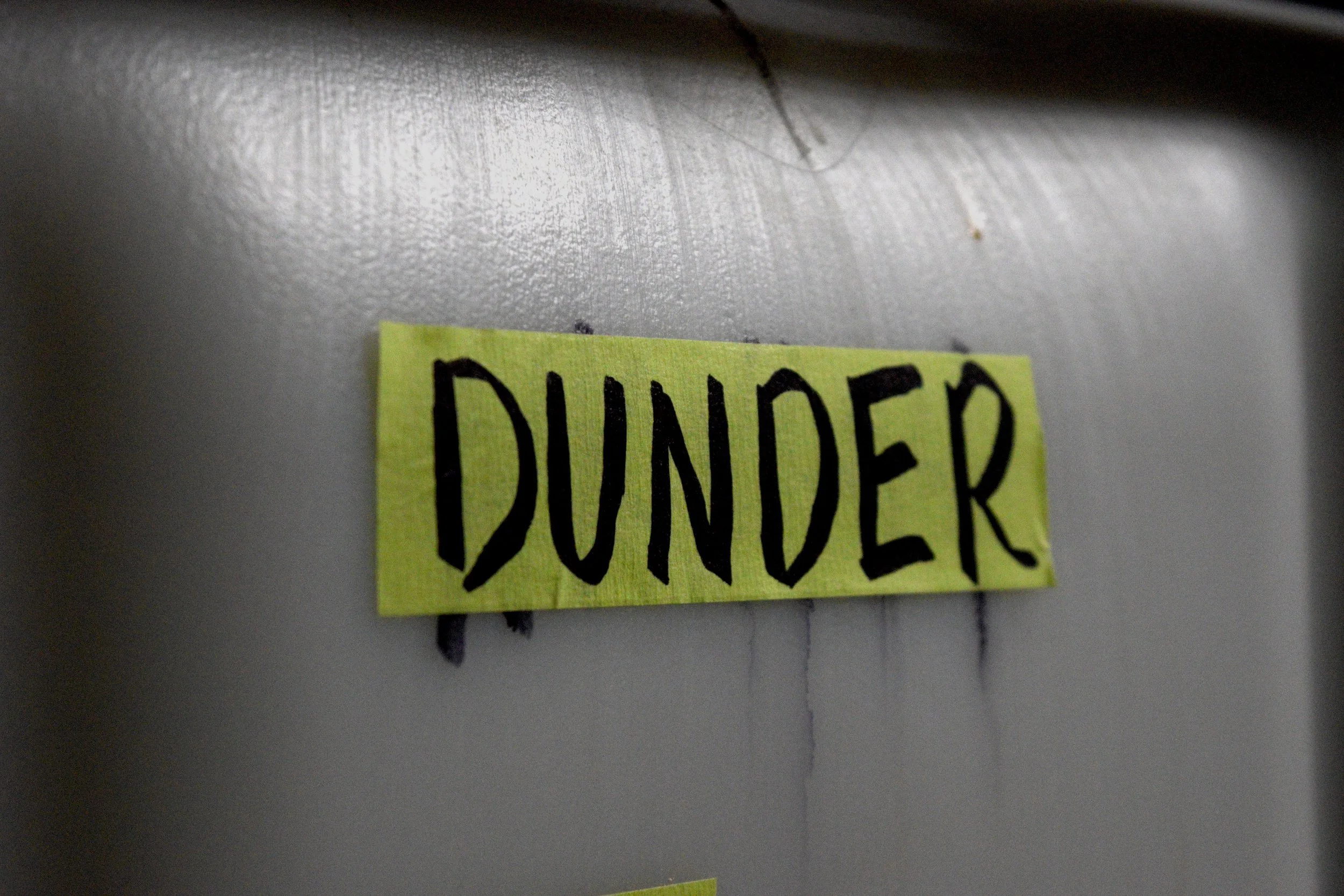variable
dunderclap
the line of variable rums all deviate from baseline because they have one variable changed. yes, the naming of the rum et al. batches are very literal. the dunderclap expression has 33% dunder added into the fermentation in place of some water. everything else was kept as constant as possible from baseline. it's fermented from 100% baking grade molasses for 17-23 days using the distiller's yeast strain of saccharomyces cerevisiae. it's then double pot distilled to a spirit strength of 75% abv. this is an extremely small batch, yielding only 14.5 gal of rum.
it’s also available at still strength!
if you’re as crazy as i am, you really enjoy high proof spirits. my favorite way of appreciating them is at still strength, meaning once it’s distilled, it’s bottled without any water added. the still strength of dunderclap is 75% abv, which is the same strength as baseline.
what does it taste like?
on the nose dunderclap (49% abv) has so much cinnamon and raisins with notes of custard. there’s citrus, like orange zest and orange blossom, along with brown butter. there isn’t any heat at all. the aromas are filled with syrupy fruits. on the palate the mouthfeel is oily and silky with no heat. there are immediate notes of dried figs, fig jam, and prunes. lots of prunes! there’s candied orange, toasted cinnamon stick, fresh grated nutmeg, and golden raisins. i also get notes of vanilla and honey.
dunderclap at still strength (75%) has similar notes, but the flavors and aromas are much more concentrated. on the nose there’s a variety of fruits, like dried apples, fruit leather, fig jam, raisins, and prunes. there are notes of vanilla and caramel alongside smarties and a touch of musk. on the palate, the sip is very oily and has very little heat. the first flavors i get are grape jelly and fig jam. there’s some earthiness that reminds me of wet branches. there are notes of candied grapefruit and honey roasted macadamia nuts.
what is dunder?
dunder is the dark liquid that’s left over in the still after distillation of the fermented wash. effectively all of the alcohol has been removed. what’s leftover is microbial solids, organic & long chain fatty acids, minerals, and unfermented sugars. straight out of the still, it’s sterile, but after only a couple days, yeast and bacteria begin to grow. the benefits of adding dunder include reusing some waste material, recycling & enhancing flavors, adding nutrients, adjusting the pH to a more optimal level, and introducing a little bit of microbial contamination. ultimately, this results in a rum with more complexity and flavors (mostly in the form of esters).
-
baking grade molasses (20 vol%)
dunder (33 vol%)
water (47 vol%)
-
distiller’s yeast (s. cerevisiae)
180 gal total volume
17-23 days
-
pot still (55 gal)
double distilled
still strength = 75% abv
14.5 gal total spirit
-
bottled october 7th, 2024
total bottles (375 mL) at 75% abv = 48
total bottles (750 mL) at 49% abv = 68
nothing added (except water for 49% abv rum)
-
total congeners = 142 g/hlpa
1-propanol (alcohol-like) = 20.58 g/hlpa
acetaldehyde (green apple) = 14.43 g/hlpa
acetone (nail polish remover) = 4.05 g/hlpa
amyl alcohols (fruity & alcoholic) = 64.14 g/hlpa
ethyl acetate (sweet) = 12.91 g/hlpa
ethyl butyrate (pineapple) = 0.10 g/hlpa
isoamyl acetate (banana) = 0.16 g/hlpa
isobutanol (sweet & musty) = 21.66 g/hlpa
isobutyl acetate (fruity & floral) = 0.01 g/hlpa




